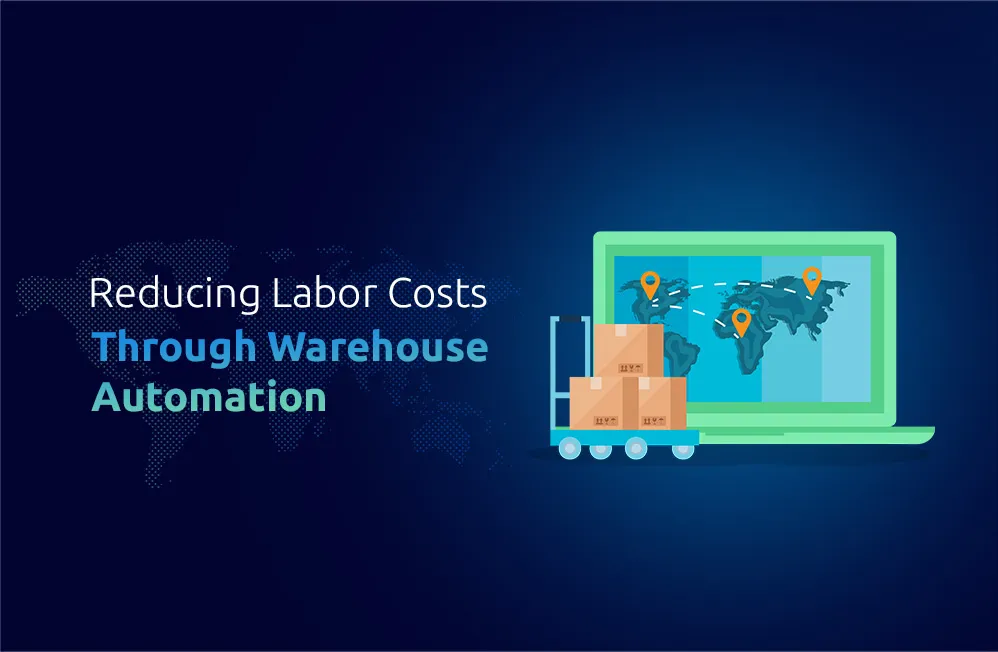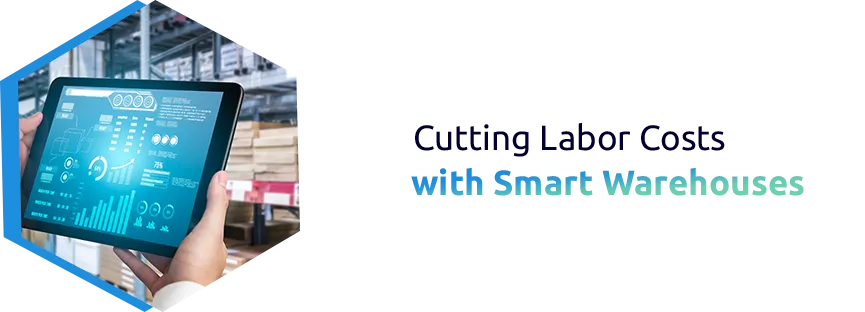Insight
Keeping expenses down without sacrificing productivity has turned automation into a vital need. Challenges such as labour problems, wage increases, and slow manual services have made warehouse automation a great solution for relieving labour costs. Modern technologies in warehouses make operations more efficient. Automated guided vehicles (AGVs), software for inventory tracking, and robots are intended to enhance each stage of warehouse operations. If used properly, robotic systems can show positive results such as operating at a lower cost, having fewer problems, higher amounts of output, and requiring less manual work.
Understanding Warehouse Automation and Its Impact on Labor Costs
Warehouse automation applies technology and smart systems to handle routine or demanding warehouse operations. Automated systems can sort, pick, pack, and transport goods without much human involvement. There are major effects on labor expenses. Automation leads to fewer people being needed for manual labour, saves on overtime, and cuts down on the inefficiencies that result from errors by people. Although start-up costs look high, continuous production during all hours lowers labor costs and brings clear benefits over time. Automated warehouse systems typically help to reduce labor by up to 30%, but this depends on how well they are integrated & the scale of the operations. Companies can save more money because machines have grown smarter with AI and machine learning.
The Benefits of Implementing Automation in Warehouses
Incorporating automation not only helps with expenses but also boosts all areas of the operation. Automated systems work the same way regardless of how much the process is slowed down by high workloads or fewer staff. High reliability helps the company complete orders smoothly, avoid delays, and make customers more satisfied. Being efficient in a warehouse typically means spending less to operate. Because computer systems never need to rest, change shifts, or take a break, they outperform humans in speed and accuracy. Output is raised, and the company doesn’t have to hire anyone extra.
Better safety for employees is another major benefit of automated work. Frequent lifting or dealing with heavy objects is usually done by robots or AGVs, which reduces both work injuries and the time machinery needs to stop. Also, being automated makes it easier to grow a business fast. It is quicker and easier to increase bots or enhance the software rather than looking for new people and teaching them.
Key Technologies Driving Warehouse Automation Success
The technological features in today’s warehouse systems are effective and easy to use. Automated guided vehicles (AGVs) show the potential of these robots well. Various loads can be moved through the facility accurately and with less human support using these machines. Robotics has greatly improved how tasks such as picking and sorting are done. Due to the use of better vision systems and AI, robots are now much faster and more accurate than humans when handling goods.
Now, inventory management software is very important. Using real-time data and analysis helps companies manage their stock effectively, avoid buying too much, and minimize storage expenses. AI and machine learning help warehouses by noticing patterns and automating decisions that used to need humans to make. Bringing these technologies together makes warehousing smarter, leaner, and better for productivity.
Real-Life Successes Showcasing Automation’s Power
Several global companies have reported tremendous cost savings after automating their warehouses. One prominent example involves a major logistics provider that cut its labor costs by 40% within two years after installing AGVs and predictive analytics. Another company deployed robotic picking systems across multiple sites, improving accuracy rates to over 99.5% and reducing the need for seasonal workers. Their automation journey began with basic conveyor systems and gradually evolved into full robotic orchestration, proving that even gradual steps can bring exponential improvements. These real-world cases demonstrate how companies, regardless of scale, can leverage automation to create more cost-efficient operations.
Managing Transformation | Changing to an Automated Warehouse System
Transferring to automated systems from manual methods involves some barriers. There is usually a high upfront cost, and joining old systems may cause problems in development. Yet, the real obstacle lies in change management. Employees may resist automation, fearing job losses or skill irrelevance. However, successful transitions are marked by clear communication and upskilling initiatives. When staff are trained to operate and maintain automated systems, they become valuable assets in the new workflow. Scalability is another concern. Many businesses start with a partial deployment, targeting the most labor-intensive tasks first. Following a modular strategy reduces problems and helps make fast progress, encouraging others to invest in the project. Automatic interoperability between various technologies improves over time, which makes integration problems much easier to handle.
The Future of Warehousing: Continuous Innovations & Trends to Watch
The automation of warehouses will continue to develop rapidly. AI systems can now better make decisions without being told and adjust their workflow. Machine learning also boosts predictive maintenance so that equipment works with few interruptions. Another new trend is creating digital twins, which serve as virtual versions of the warehouse, help spot problems, and improve the layout. People are using more voice-directed and wearable technology.
These technologies guide workers through complex tasks, improving speed without full robotic replacement. The push for sustainability is also shaping automation. Energy-efficient systems and smart power usage are becoming standard expectations.
Conclusion
The answer to cutting labour costs is to work more wisely, not harder. Automation in warehouses gives companies a reliable and effective method to handle more work, be more efficient, and reduce mistakes without sacrificing results. Intelligent systems enable businesses to be faster, more accurate, and more cost-effective, advantages that are important for any business wanting to grow. One Union Solutions helps businesses implement a system that allows for easy adjustments as it grows. Our team is ready to help you save on labour, boost your dependability, or safeguard your operations for the future. Automating is something we should do right now. Go ahead, move on, and get smarter, more quickly, and with greater force.
Did You Know?
According to recent government-backed market studies in India, over 65% of warehousing facilities in high-growth zones are actively investing in partial or full automation to combat rising labor shortages. These facilities report a 15–25% reduction in operational costs within the first 18 months of integration.
FAQs
How much can the cost be saved using automated warehouse systems?
Automation at a warehouse often means employers can reduce staff by 20-40% based on current levels of automation.
Is warehouse automation suitable for small or medium-sized operations?
Yes, automation can be scaled. Many companies start small—automating specific tasks—and expand as they see ROI.
How long does it take to get the ROI for automated warehouses?
Many operations reach a point where the initial investment is covered by cost savings within 12–24 months, thanks to fewer staff, better results, and lower running expenses.
Does automation mean eliminating all human jobs in the warehouse?
No, it typically means shifting roles. Employees often transition to managing systems, maintaining equipment, or handling tasks that require decision-making.
Could a specific task be automated to achieve the biggest savings?
Tasks involving repeatedly moving goods, such as picking, packing, and internal shipping, are usually the first to be handled by automation to achieve cost savings quickly.












